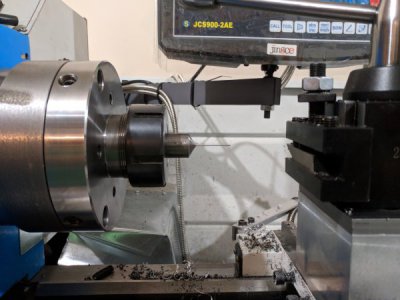I need to take an Al rod and turn it down to make two pieces about 100 thousandths diameter by 350 thousandths long. Tolerances need to be no better than 5 thousandths or so, that part's easy. I have some ~0.5" rod stock to start with.
I'm guessing that if I just turn it down to that diameter it will flex quite a lot and I'll have some problems before I even get to 100 thousandths. Any advice on the best approach on this before I create a lot of scrap?
Or, am I worrying about nothing, it will be easy, and I should quite typing and just get on with it?
I'm guessing that if I just turn it down to that diameter it will flex quite a lot and I'll have some problems before I even get to 100 thousandths. Any advice on the best approach on this before I create a lot of scrap?
Or, am I worrying about nothing, it will be easy, and I should quite typing and just get on with it?



